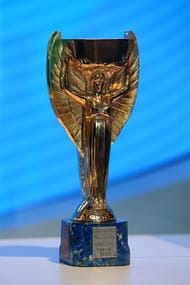The United States National Soccer Team’s third-place finish at the 1930 World Cup was no fluke. Sure, only 13 teams were invited to compete in the inaugural tournament and the US secured their 3rd place finish because Yugoslavia refused to play in the third-place matchup. However, the USNMT's best finish was by no means a sporting miracle. The furthest the national team has ever gone was indicative of the nation’s nascent love affair with the beautiful game.
Long before MLS there was the American Soccer League. Founded just a year after the NFL in 1921, the ASL was comprised of teams primarily from the Northeast of the US. The Fall River Marksmen dominated the league for the 10 years it remained active, winning six league titles in that time. Fall River’s chief competition came from the New Bedford Whalers and Pennsylvania’s Bethlehem Steel.
Unlike the already well-established MLB, playing soccer professionally was an occupation that wouldn’t become the standard until many years later. Every ASL player that graced the pastures-turned-soccer fields in the 1920s worked multiple jobs to make a living. In fact, this wasn’t just the case in the States, but all over the world.
It wasn’t until the TV contracts of the 60s and 70s that athletes were able to make a living playing sport. With industry booming in the US, it wasn’t difficult to attract top European and South American talent. Just a couple years after the founding of the league and the ASL was already home to at least 50 European internationals who regularly represented their countries at national level.
With the promise of a stable high-paying manufacturing job and added wages from playing soccer matches, top European players could bring home $50 a week from factory work plus another $50 per match played.
Even if industry tycoons like Charles M. Schwab didn’t invest copious amounts of money into their companies’ teams in order to poach soccer greats from Europe, the ASL would still have been a formidable league. The Northeast was the country’s soccer hotbed due to the wave of immigrants that came over between 1880-1930.
This period saw the emigration of millions of Italians, Russians, Germans, British, Irish, and those of the Austro-Hungarian Empire enter through Ellis Island and spread throughout the Northeast. Not only would they bring new cuisine and diverse accents, but an inextricable love for the world’s game.
Teams regularly brought in between 8,000 and 15,000 spectators every game. Such numbers were more than the NFL and were comparable to the long-established and beloved MLB.
Soccer results would often jockey for position in the headlines against baseball and American football. If you lived in the Northeast during the 1920s it would have been clear that soccer was no second-class sport.

The golden age of US soccer culminated with the USMNT’s best World Cup finish. The first ever US World Cup squad defeated both Belgium and Paraguay 3-0 to reach the semi-finals. The team was stacked with immigrants such as Archie Stark who tallied 232 goals in 205 appearances for Bethlehem Steel. Stark along with other squad players was born in Scotland before emigrating to the states at a young age.
Forward, Bert Patenaude also donned the stars and stripes for the USMNT. Patenaude was of French-Canadian ancestry, played in the ASL and recorded the US’s and the FIFA World Cup’s first ever hat-trick when the team beat Paraguay 3-0 in front of 18,000 spectators at Estadio Parque Central in Montevideo.
Despite the New York Times backing the team after going undefeated in the group stage with the headline, “U.S. Favorite To Win World’s Soccer Title” they would fall to Argentina 6-1 in the semis.
While the national team may have had its high in 1930, the domestic league was beginning to crack years before. In the attempt to appeal to the American audience, the ASL attempted to implement substitutions and determining the league winner by a team’s winning percentage rather than point total.
These changes were anathema to the United States Football Association (USFA) which functioned as the country’s soccer governing body. Despite disagreements from the above, the ASL decided to implement their rule changes. It wasn’t until 1928 when all but three ASL teams decided to pass on the USFA’s annual Challenge Cup tournament.
As a consequence both the USFA and FIFA refused to recognize the league. Subsequently, the United States Football Association countered the ASL’s behavior by creating a league of their own. The friendly fire that took place would fragment both leagues.
Even though both leagues would make nice shortly after 1928, a hammer blow came when the stock market crashed. The fledgling league wasn’t strong enough to weather the storm of the country’s worst economic crisis.
It’s hard to imagine a time when soccer was almost king in the US or at least had a seat at the royal table. Had it not been for internal bickering it’s possible that the US would be boasting one of the most storied and competitive domestic leagues in the world.
